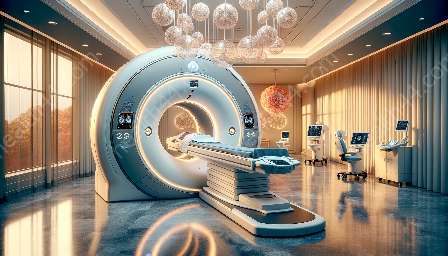Healthy blood pressure is essential for overall health and well-being. Monitoring blood pressure is crucial for preventing and managing various medical conditions. Blood pressure monitors play a vital role in healthcare, enabling individuals to keep track of their blood pressure levels accurately and consistently. In this article, we will delve into the world of blood pressure monitors, explore their significance, and discuss their compatibility with medical imaging devices and other medical equipment.
The Importance of Blood Pressure Monitors
Blood pressure is a measure of the force exerted by the blood against the walls of the arteries as the heart pumps it around the body. Maintaining a healthy blood pressure level is crucial for preventing heart disease, stroke, and other health problems. Regular monitoring of blood pressure helps individuals and healthcare professionals to detect and manage hypertension, a condition that can have serious health implications if left untreated. With the availability of blood pressure monitors, individuals can conveniently and accurately measure their blood pressure at home, promoting proactive health management.
Types of Blood Pressure Monitors
There are different types of blood pressure monitors available, including manual, automatic, and ambulatory monitors. Manual blood pressure monitors, often used in clinical settings, require the use of a stethoscope and inflatable cuff. Automatic monitors, on the other hand, are electronic and operate with the press of a button. Ambulatory monitors are portable devices that measure blood pressure at regular intervals throughout the day, providing a comprehensive view of an individual's blood pressure over a 24-hour period.
Compatibility with Medical Imaging Devices
As part of the broader landscape of medical devices and equipment, blood pressure monitors are compatible with medical imaging devices in the context of comprehensive patient care. Both medical imaging devices and blood pressure monitors contribute to the holistic evaluation of a patient's health status, with the former providing detailed visual information about the internal structures of the body, while the latter offers insights into cardiovascular health. Integration with electronic health records (EHR) and other digital systems enables seamless data sharing and analysis, further enhancing the compatibility and utility of blood pressure monitors alongside medical imaging devices.
Compatibility with Other Medical Devices and Equipment
Blood pressure monitors also exhibit compatibility with various other medical devices and equipment, such as cardiac monitors, pulse oximeters, and ECG machines. These interconnected devices contribute to the comprehensive monitoring and management of cardiovascular health, supporting healthcare professionals in delivering personalized and effective care to patients.
Benefits of Blood Pressure Monitors
The benefits of blood pressure monitors are multifaceted. These devices empower individuals to actively participate in the management of their cardiovascular health, fostering a sense of control and responsibility. Moreover, regular monitoring with blood pressure monitors enables early detection of hypertension and other cardiovascular conditions, leading to timely interventions and improved health outcomes. From a healthcare provider's perspective, the integration of blood pressure monitors into patient care pathways enhances the ability to assess and manage cardiovascular health systematically, resulting in more personalized and effective treatment plans.
Usage Tips for Blood Pressure Monitors
When using a blood pressure monitor, it is essential to follow best practices to ensure accurate readings and reliable data. Some key usage tips include maintaining proper positioning of the cuff on the arm, avoiding caffeine, alcohol, and tobacco before measurements, and ensuring that the device is regularly calibrated and validated for accuracy. Additionally, individuals should adhere to a consistent schedule for measuring their blood pressure, ideally at the same time each day, to obtain reliable data for monitoring trends and changes over time.
In Conclusion
Blood pressure monitors are indispensable tools for promoting cardiovascular health and preventing the onset of related medical conditions. Their compatibility with medical imaging devices and other medical equipment enhances the overall capacity for comprehensive patient care. With a combination of technological advancements and user-friendly designs, blood pressure monitors continue to play a pivotal role in empowering individuals to take charge of their cardiovascular well-being while facilitating healthcare professionals in delivering personalized and effective patient care.


